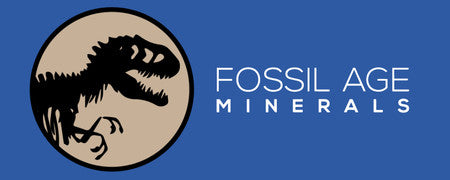North America’s fossil record chronicles over 3 billion years of dramatic prehistoric life. Spanning extinct marine reptiles to Ice Age saber-tooths, North American strata have yielded some of paleontology’s most storied discoveries. In this blog, we highlight the most common fossils buried within the rocky layers of this fossil-rich continent.
Ammonoids

These extinct cephalopods dominated Mesozoic marine ecosystems for over 340 million years. Ammonoids left behind abundantly fossilized coiled shells. Their intricately ribbed and sutured shells adorn many rock faces, from New Mexico’s Jurassic outcrops to Cretaceous Pierre Shale formations across the Western Interior Seaway. These marine mollusk fossils are iconic symbols of North America’s primordial ocean life.
Crinoids

Also known as ‘sea lilies,’ crinoids had flower-like bodies on stemmed anchors. While the animal itself decayed after death, their stems fossilized prolifically. Crinoid column pieces segmented like stacks of coins are common in North America’s vast Paleozoic limestone and shale deposits. Their fragments contributed to great fossil beds now exposed from Iowa to Ontario
Trilobites

Amongst Earth’s first arthropods, trilobites were Paleozoic marine dwellers often fossilized post-mortem in nicely enrolled poses revealing intricate body segment details. Numerous trilobite genera spanning millions of years have been found across sites from the Grand Canyon to Newfoundland’s Cambrian beds. These iconic early creatures populate North American strata in abundance
Brachiopods

These marine shellfish relatives of mollusks ruled Paleozoic seafloors. Brachiopods left behind distinct two-part valve shells now fossilized extensively through sites like Cincinnati’s Ordovician strata. Heart-shaped brachiopod fossils numbering in the billions occur across North America’s ancient ocean floors turned to stone.
Petrified Wood

Fossilized wood is common across western North America, from Arizona’s Petrified Forest to Canada’s Joggins Cliffs. Entire prehistoric forests turned to colourful agate, and quartz stone dot these landscapes. Logs up to 100 feet long have been found fossilized with incredible lifelike detail. Dakota Formation wood fossils show tree rings and bark detail from Cretaceous-era conifers along with the oldest amber fossil collections.
Bison & Ice Age Megafauna
Beyond iconic marine fossils, North America’s land fossils also showcase crucial evolutionary chapters. Dinosaur National Monument contains huge assemblages of dinosaur bones from Jurassic sauropods to Cretaceous raptors. And the legendary Hell Creek Formation gifted the world discoveries like Tyrannosaurus rex and Triceratops horridus when the most complete dinosaur fossil collections were found.
Cave sites across North America have revealed fossils of giant ground sloths, sabre-toothed cats, woolly mammoths, camels, dire wolves and early bison mummified in asphalt seeps. From La Brea Tar Pits to New Mexico’s Leisey Shell Pit, these Ice Age fossils showcase North America’s last great megafauna before human arrival.
From the Cambrian’s earliest lifeforms to Pleistocene monsters, North America’s rocks chronicle epic prehistory dramas - with the most common fossils evidence on public display at museums across this paleontologically rich continent.


